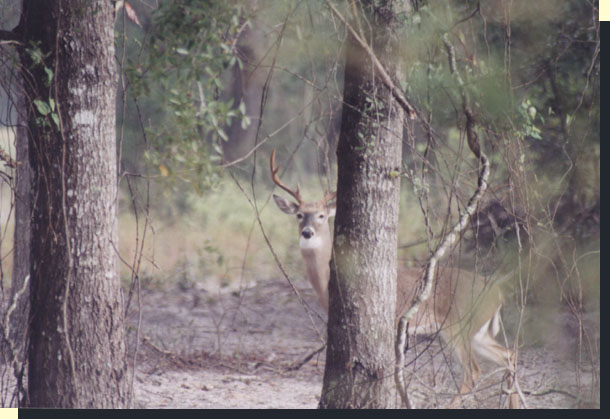
The typical whitetail, restricted to open grass plains, would not survive. Although, to everything there are exceptions, and whitetails for example who are facing deep, obstructing snow that slows their escape, or even traps them in place, will yard on flat, windblown prairies. They are choosing the less dangerous of two very dangerous options. Their normal way of escaping predators cannot be used in open country. When yarded up in winter the herd is preyed upon by predators...it is mostly the young, the old and the sick on the outer edges that are the ones attacked.
Hoofed animals that live out in the open, such as elk, are usually distance runners, and if they can run faster than their predators and outlast their predators—who for the most part are also good runners—they get to live another day. A whitetail in the open though is a sitting duck for a pack of wolves, coyotes or dogs who are committed to the chase. As a group, whitetails are hiders, dodgers and sprinters—not distance runners—who like to out run and put obstacles between themselves and the predator.
The whitetail deer's first concern is safety, so their environment must have what they need to allow them to maximize their best protection strategies. The doe with fawns is more intensely safety conscious than the buck, and a buck in rut can actually get quite stupid and forgoe safety for the chance to breed. But, if the food is great, but safety is not, deer generally will shun that location in favor of a more secure place. Individual whitetails are extremely loyal to their own territory, although they will leave it for up to several days if they are being hunted there, and they will leave it permanently if it becomes unsafe. In these cases their loyalty to their deeply ingrained anti-predator instincts win out over their attachment to the home territory. However, there are stories of whitetails that have starved rather than leave a barren home territory, in this case their attachment to their home keeps them on a doomed path to starvation.
If their habitat is invaded by competitors, like exotic deer, the whitetails compete poorly. Whitetail deer in Maryland were being pushed out by the oriental sika deer until conservation management helped them out. Overall, a specialist will out compete a generalist in an established area, but while the specialist may win the battle, the flexibility of the generalist, over the long run, lets them win the war.